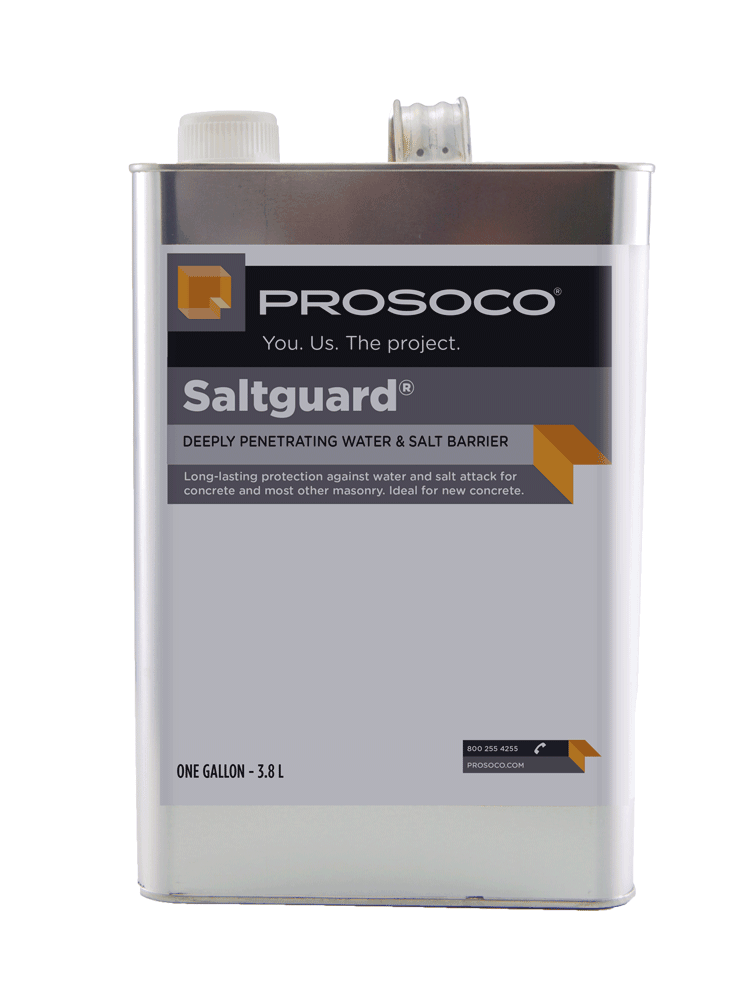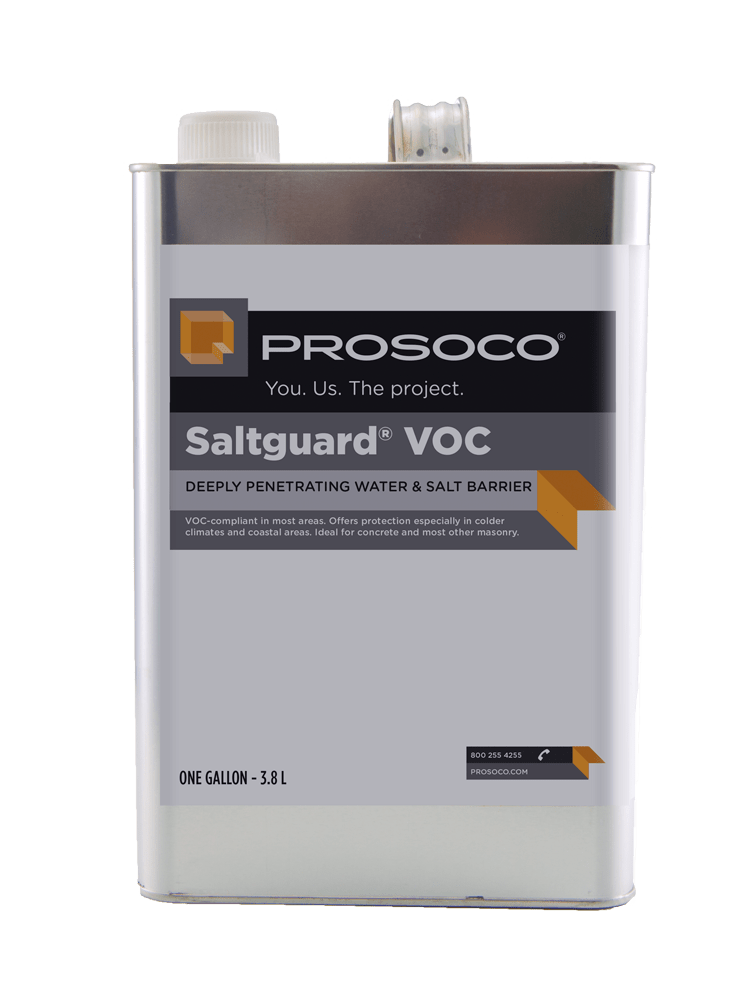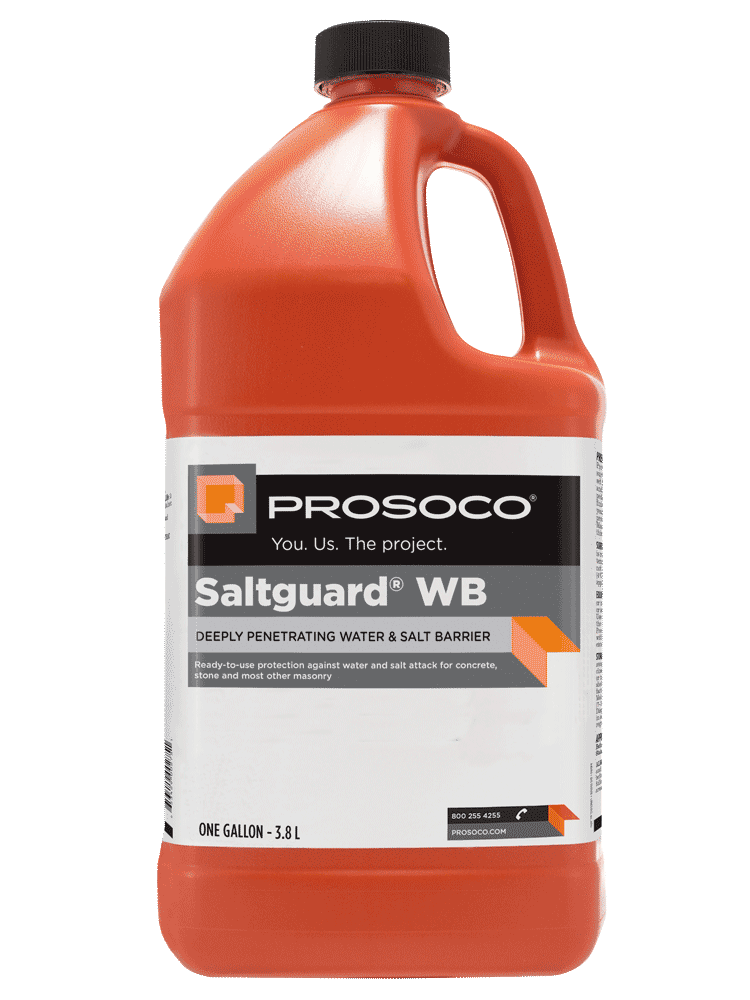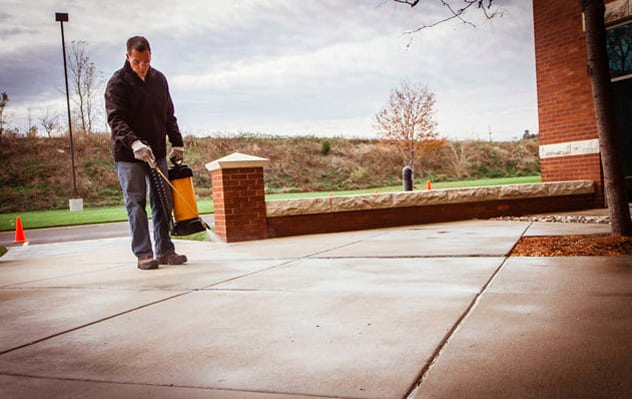Rock salt is usually sprayed on roads and driveways during winters to melt ice and snow. According to a report published by the Transportation Research Board, approximately 10 million tons of salt are used every year to clear icy roads and driveways.
While this is an effective method for melting ice and snow, the question is, does salt damage your concrete?
The answer is yes, salt does indirectly damage your concrete driveways, patios and sidewalks.
Bumps and potholes don’t just appear due to regular wear and tear – salt damages concrete over time by causing corrosion to occur under the surface, leading to discolored, cracked and crumbling concrete.
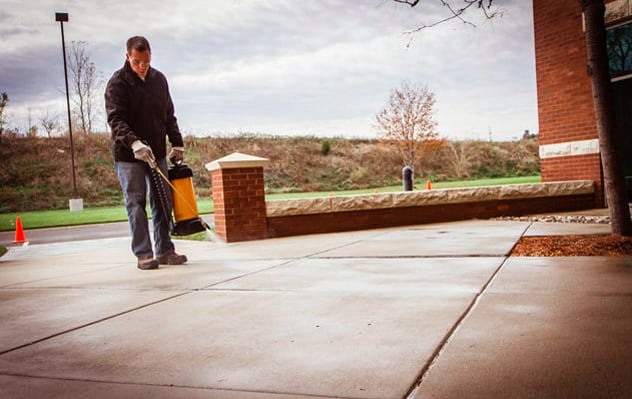
How exactly does salt damage concrete?
Concrete happens to be a porous material that absorbs water easily. During winters, water on roads and driveways is turned to ice or snow – however, this itself does not cause damage to the concrete. What really causes concrete to deteriorate are deicers, such as salt. Similarly, in coastal climates, moisture in the air contains high levels of sodium chloride, which can cause concrete to crumble and become discolored over time.
The science behind salt damage to concrete
Salt damage to concrete mainly occurs due to chemicals that react with the surface of the road or pavement. These structures are generally made with white-gray concrete. The calcium hydroxide present in concrete reacts with the calcium chloride in salt, creating calcium oxychloride (CAOXY) in salt, thus wreaking havoc. When forming inside concrete, CAOXY crystals expand, causing internal cracks and crumbling. This leads to increased salt damage to concrete driveways - which is further amplified by the effect of the freeze-thaw cycle.
Salt also lowers the freezing point of water and increases the pressure of frozen water, thereby intensifying the effect of the freeze-thaw cycle. When ice melts, it carries approximately 10% more water than normal. In lower temperatures, this extra water adds additional ice to the concrete upon refreezing, which adds hydraulic pressure to the concrete.
However, good quality concrete is more resistant to salt damage. If further protected with an effective sealer like Saltguard, Saltguard WB, or Saltguard VOC you can easily prevent salt damage to concrete.
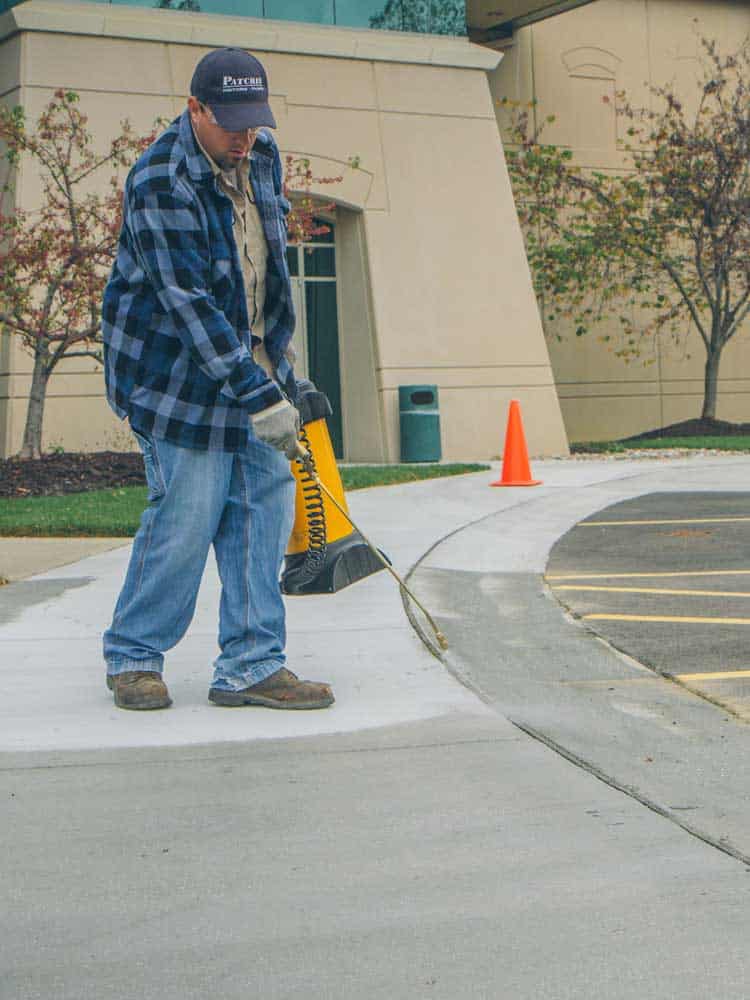
What is Saltguard WB?
PROSOCO’s Saltguard WB is a water-based, VOC-compliant repellent that provides excellent protection against salt damage to concrete and masonry. It works by penetrating deeper than conventional water or solvent-based repellents, making it ideal for protecting concrete from salt damage.
Furthermore, in coastal areas, Saltguard WB protects against salt damage to concrete caused by high sodium chloride levels in the air. This type of water repellent acts as a chloride screen by penetrating and chemically bonding with the substrate to protect against water and salt damage.
How to use Saltguard WB?
Preparation
Direct contact from the spray should be avoided. You should also protect other surfaces from the spray. Despite its minimal odor, you will need to ensure proper ventilation before using Saltguard WB.
Before application, the entire surface area should be thoroughly cleaned using the appropriate PROSOCO products. Sealers, curing compounds, oil, grease and rust should be completely removed, as such contaminants can alter the penetration and bonding of Saltguard WB.
For best results, apply Saltguard WB on visibly dry surfaces. Damp surfaces reduce penetration, as they serve as a barrier between the product and the concrete surface. Excessive moisture may also reduce the effects of the treatment.
Application
Care must be taken to ensure that the surface is duly prepared before starting the application. Prior to application, a patch test should be conducted for each type of surface to ensure suitability. The test area should be inspected upon drying, and the process only carried forward if the results are positive with no blotchy stains. The application must be done in a shaded area, and the containers should be stored out of direct sunlight.
It is recommended that you apply the repellent in high volume and low pressure (<50 psi) using a fan-type tip. Brushes or rollers can also be used for small scale application. Smooth, uniform saturation of the surface with the spray is important, and any pools or puddles should be immediately brushed out.
Why use Saltguard WB?
Saltguard WB has penetration powers far greater than those of traditional repellents. It is alkaline stable, and reduces rebar corrosion caused by salt content in moisture, especially in coastal regions. Saltguard WB also provides exceptional protection against any salt damage to concrete garage floors, sidewalks, patios, or even roads that are exposed to deicing salts.
If you’re concerned about salt damage to concrete driveways and other surfaces, PROSOCO’s Customer Care team can help.
Call and speak to a live person from Monday through Friday, 8 a.m. through 5 p.m., Central Standard Time, at 1-800-255-4255. Or visit the PROSOCO Help Center, open 24/7, at help.prosoco.com.
![]()
